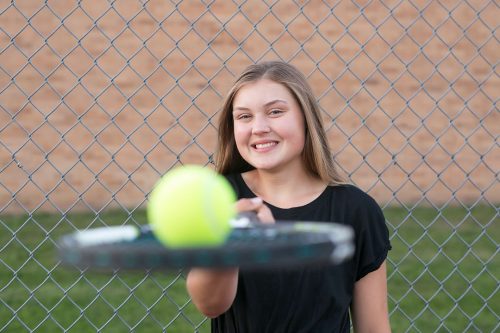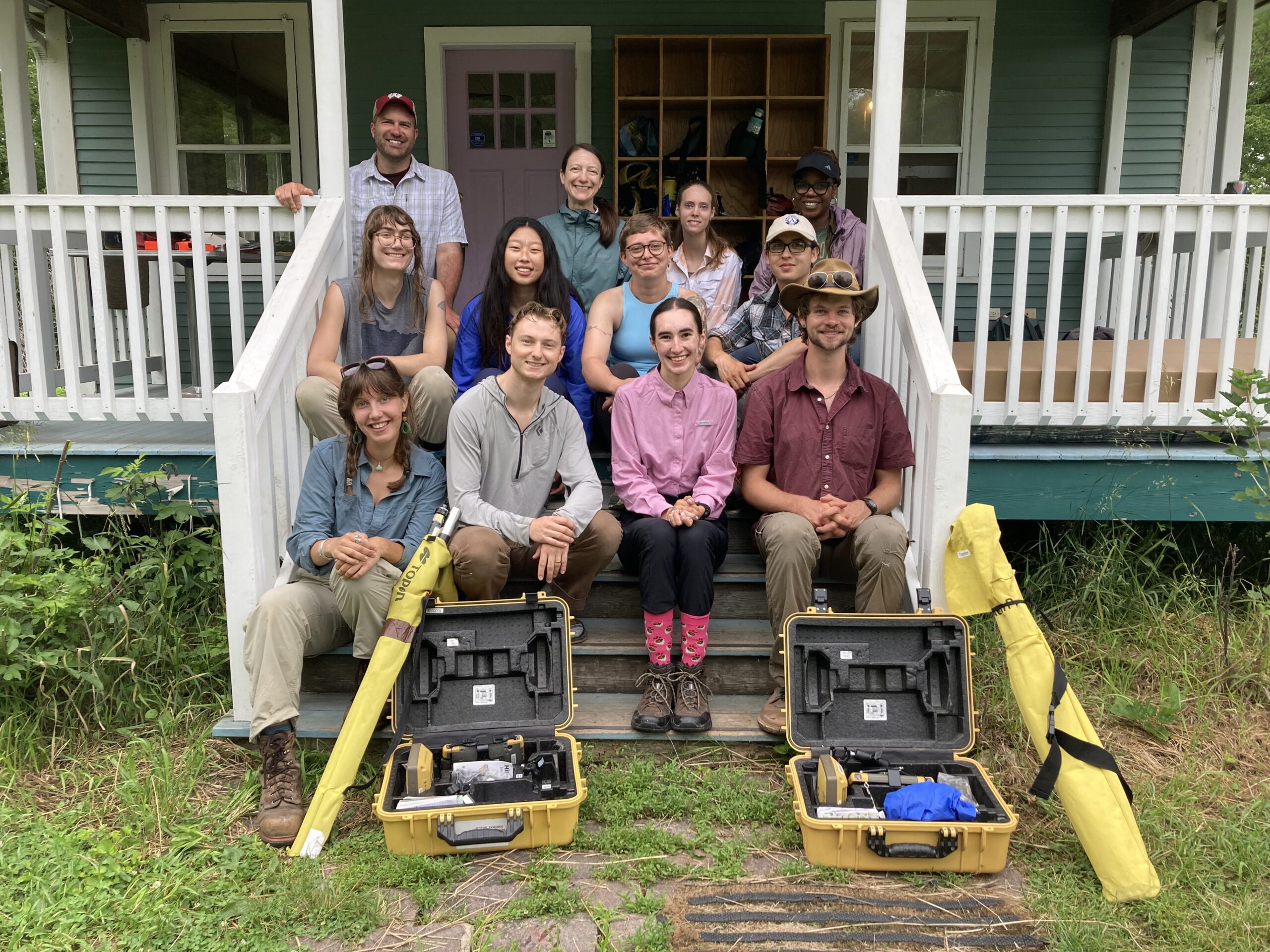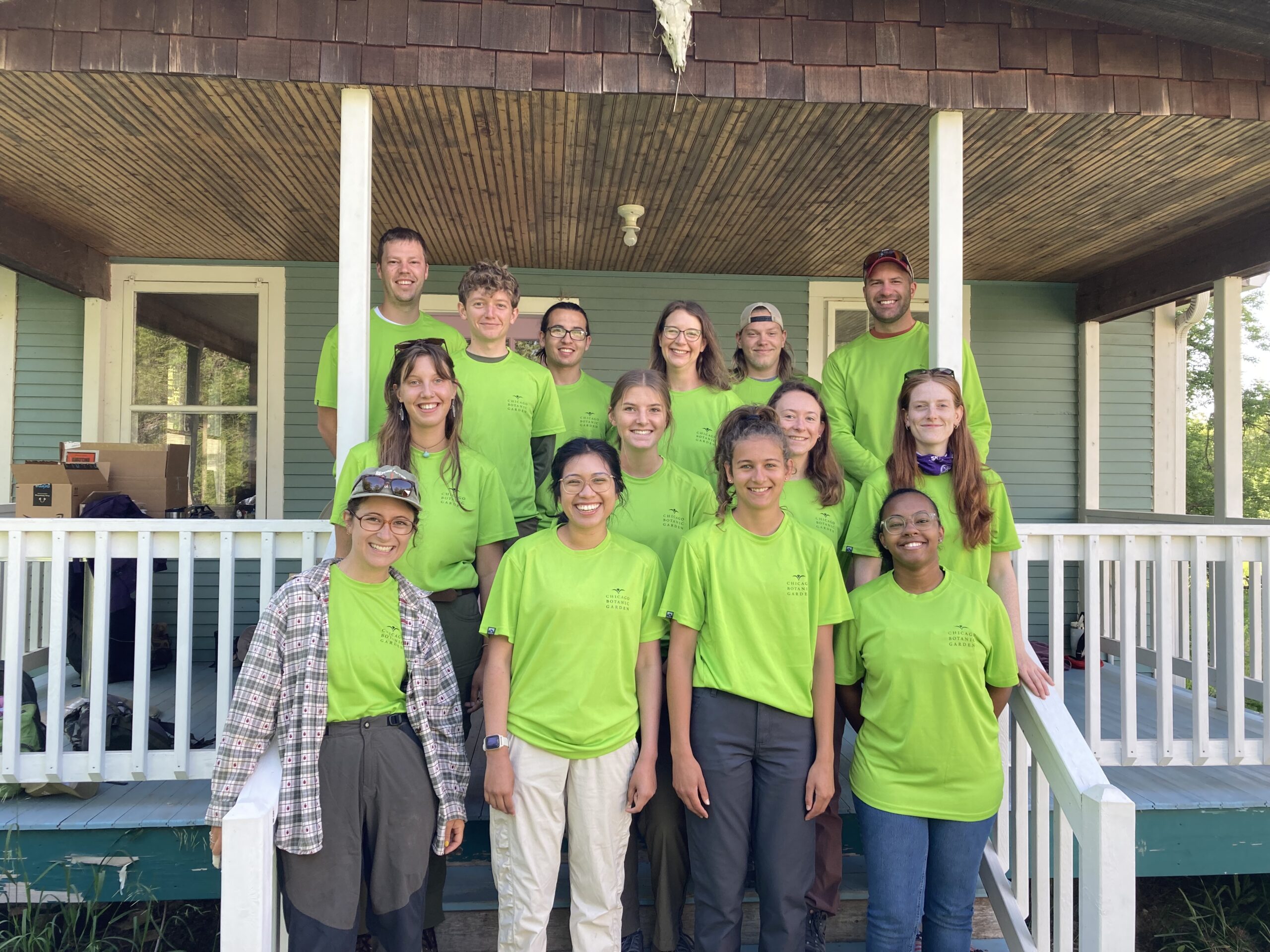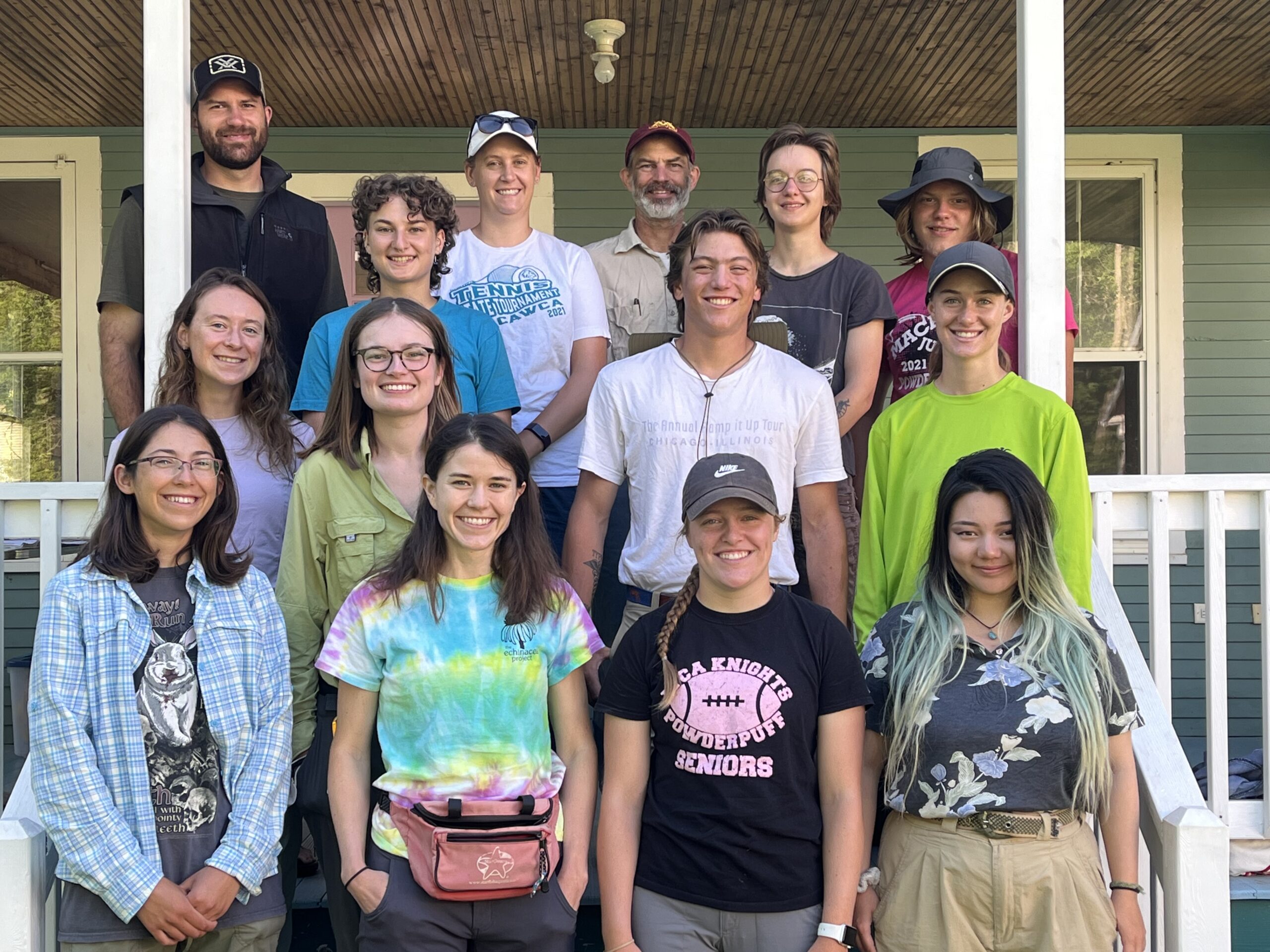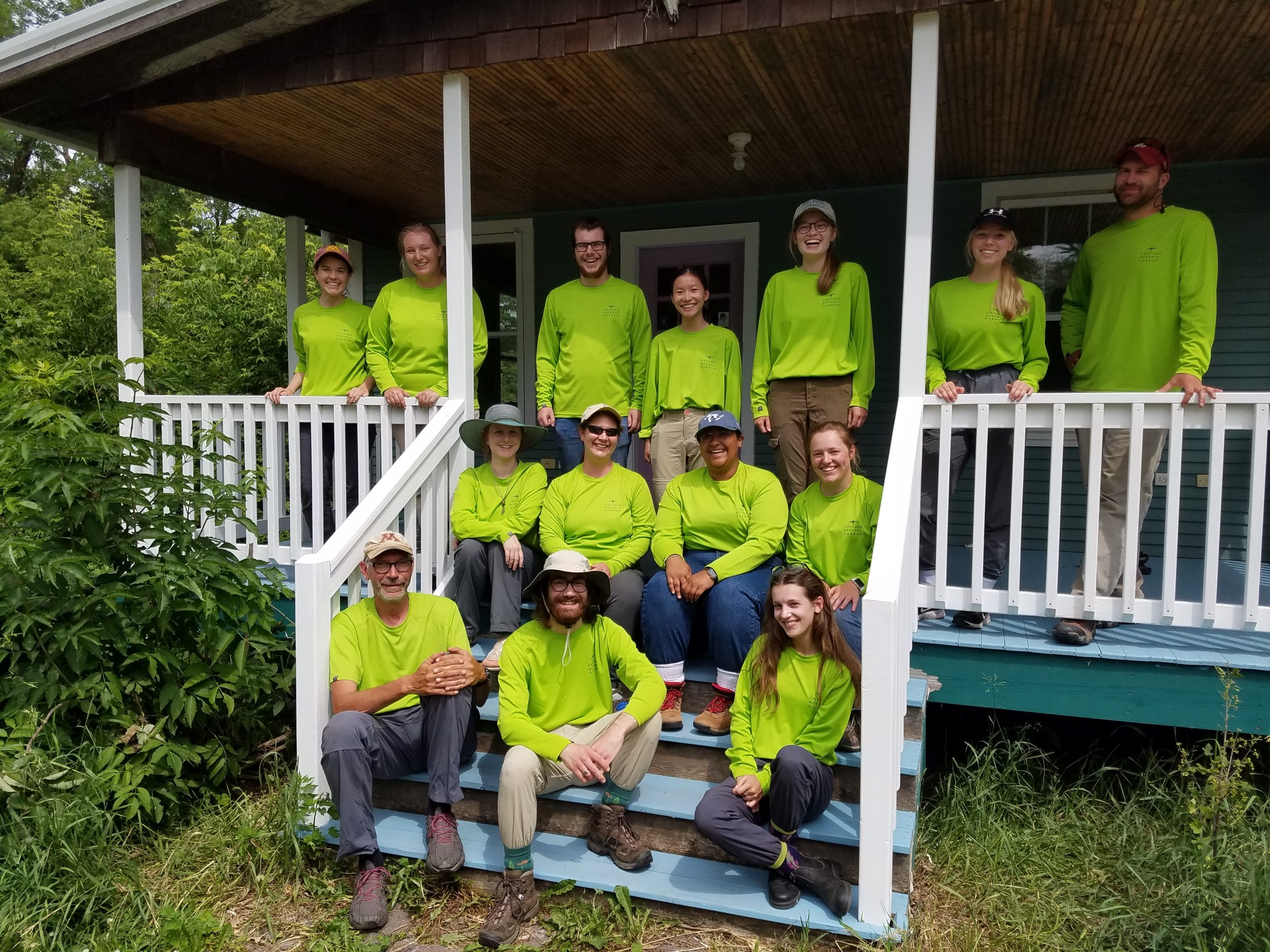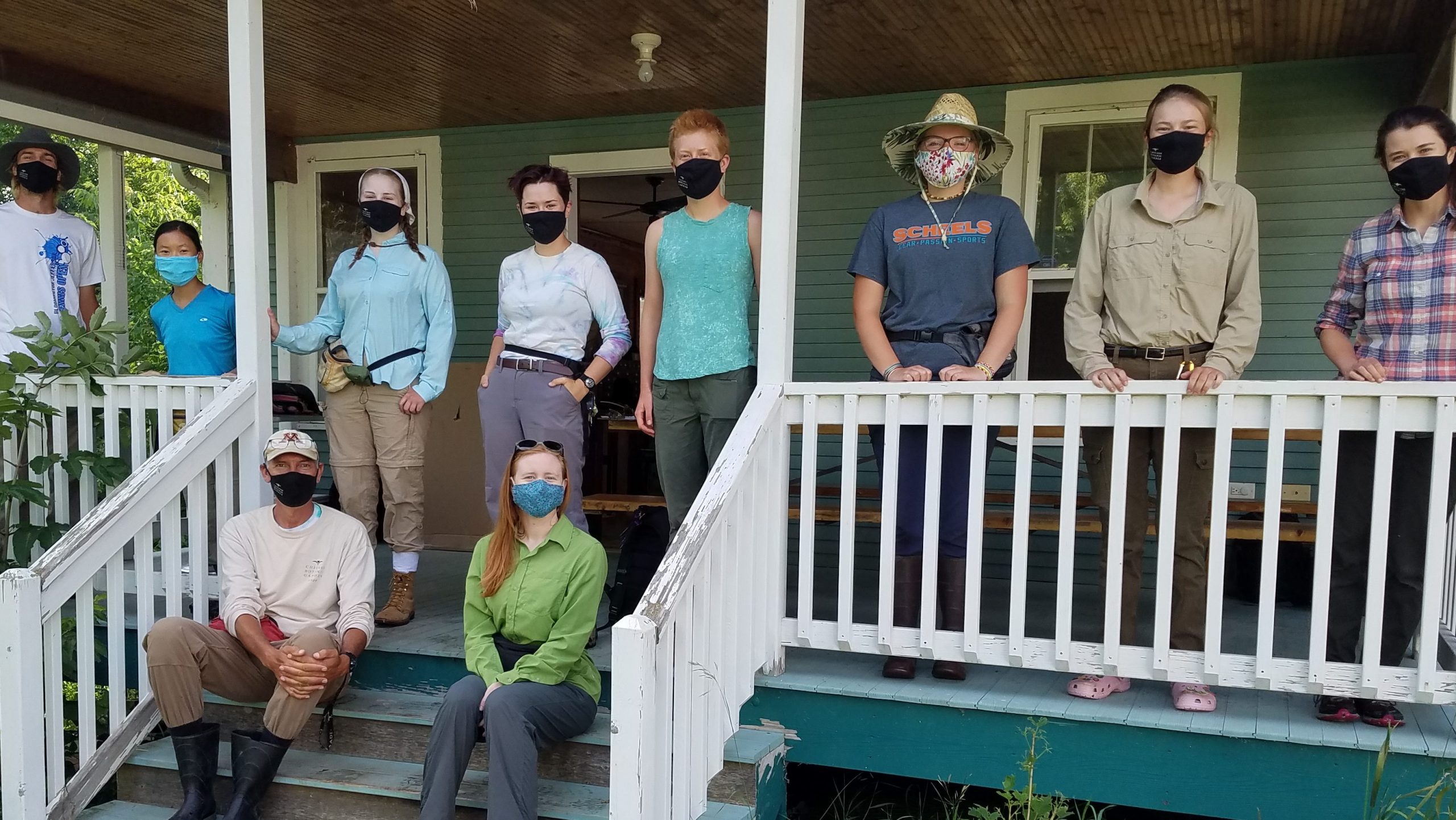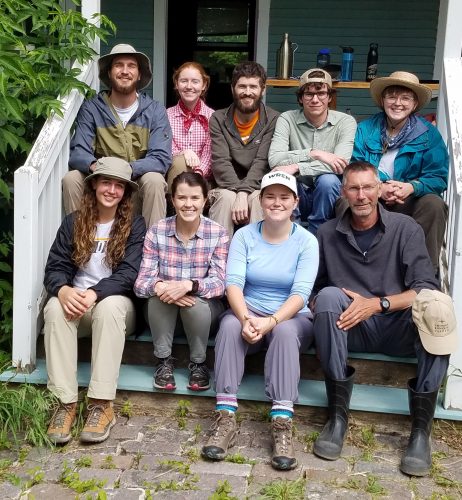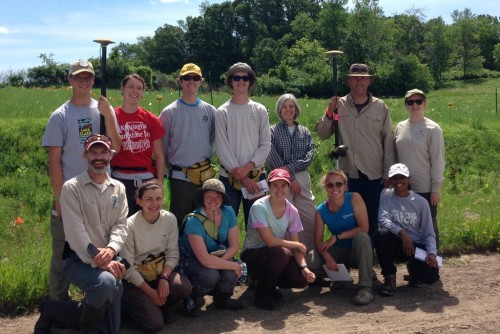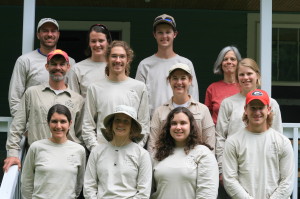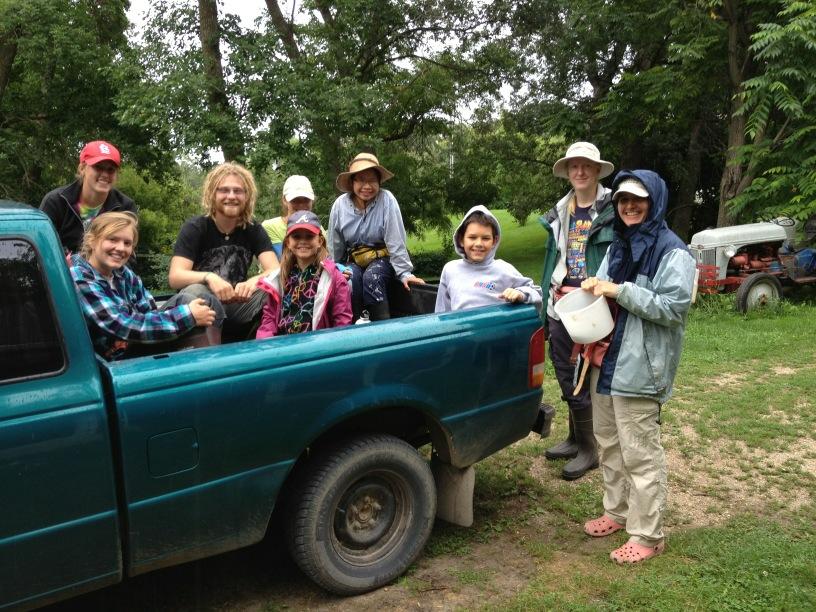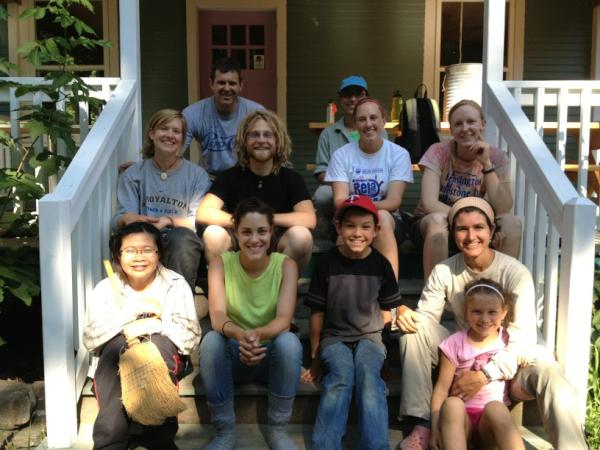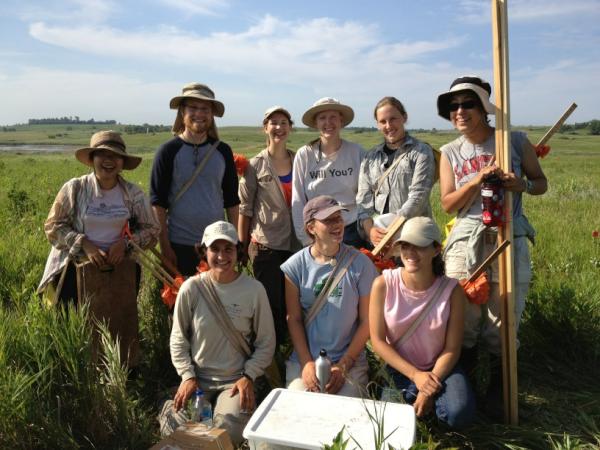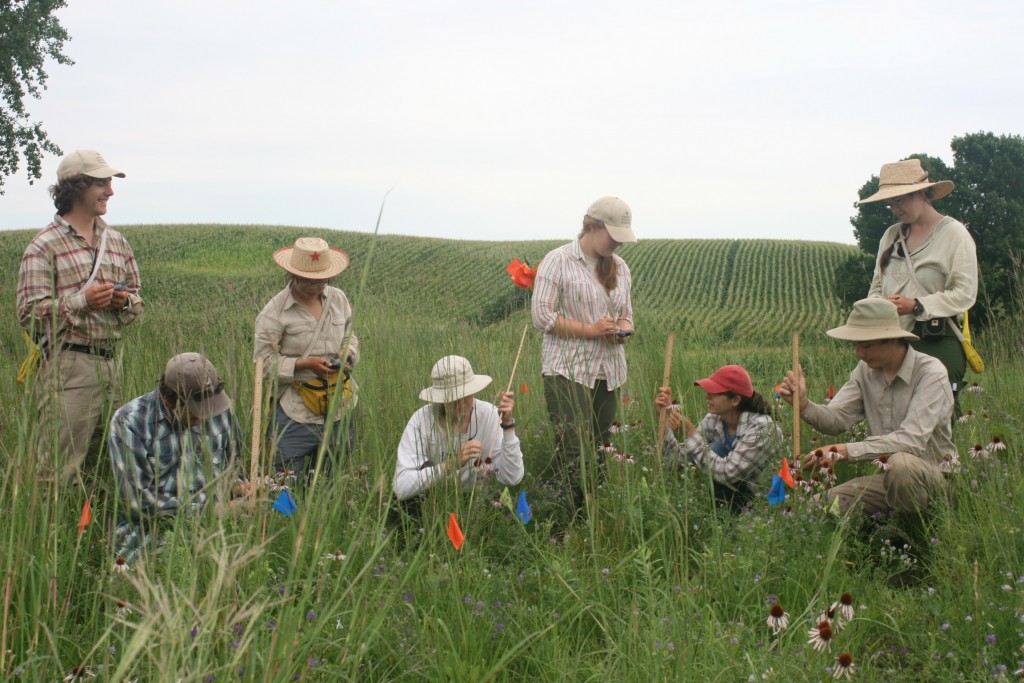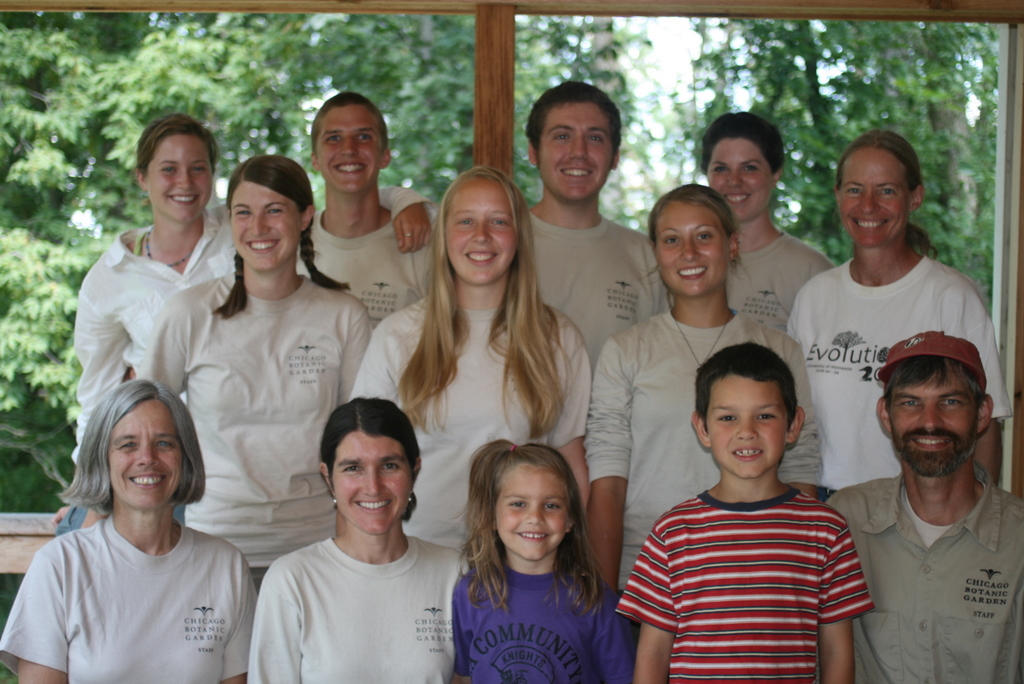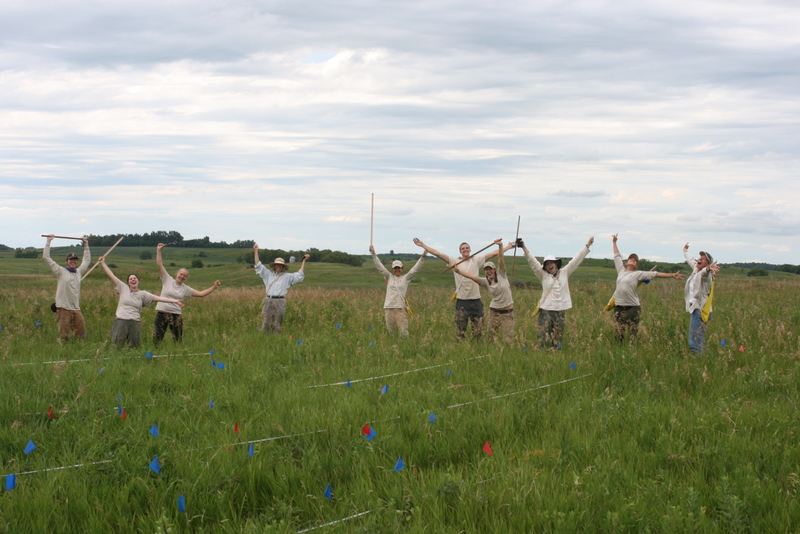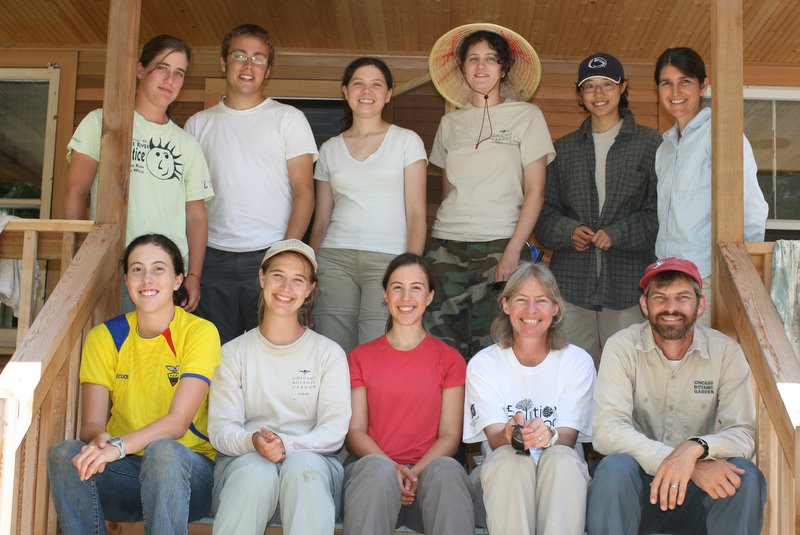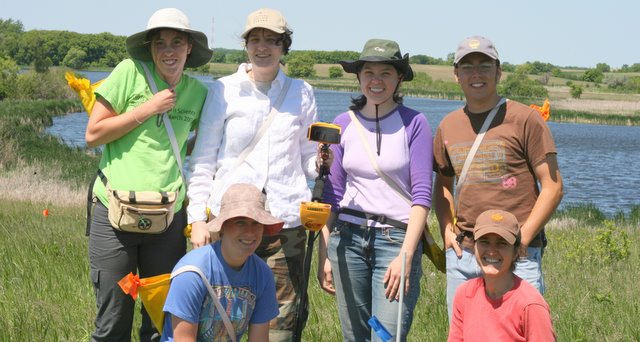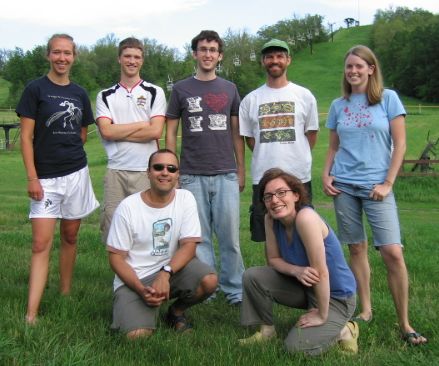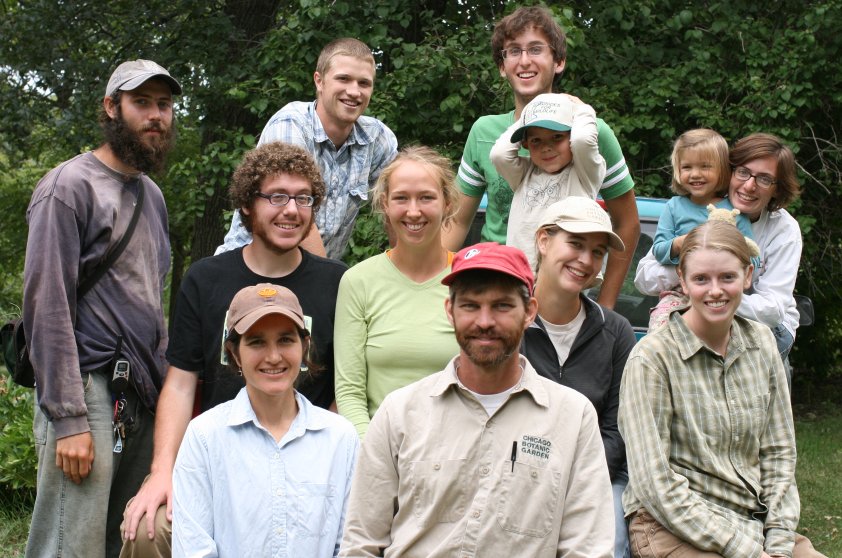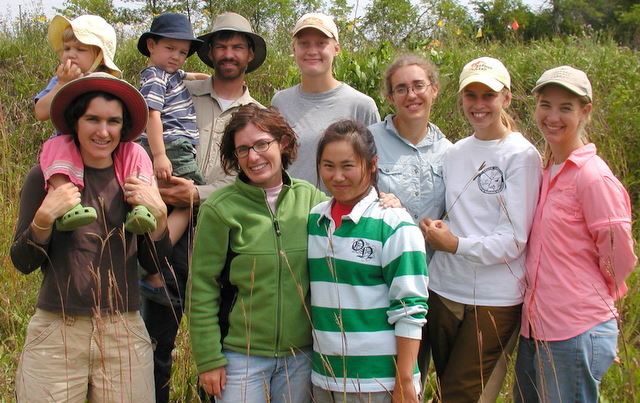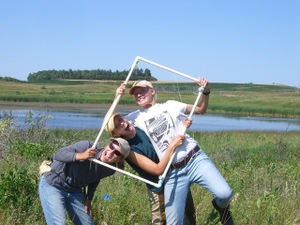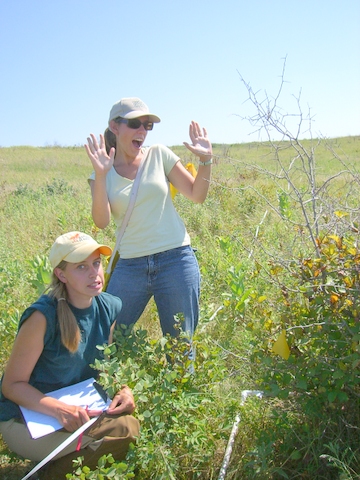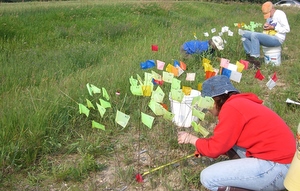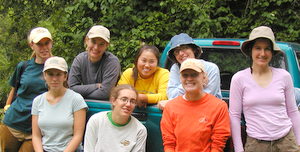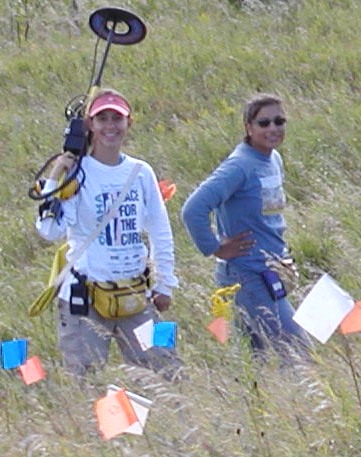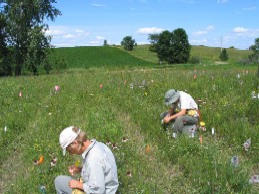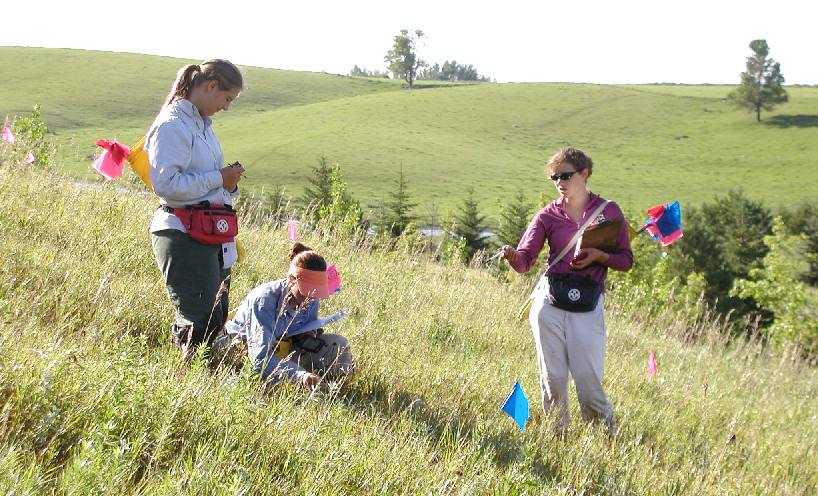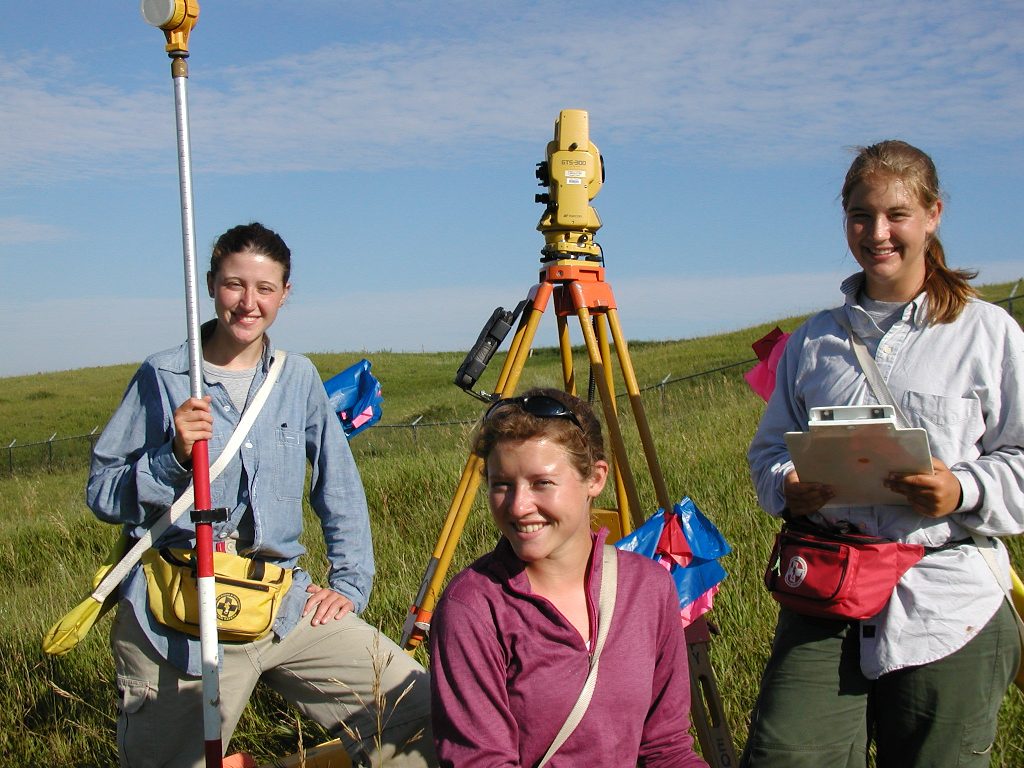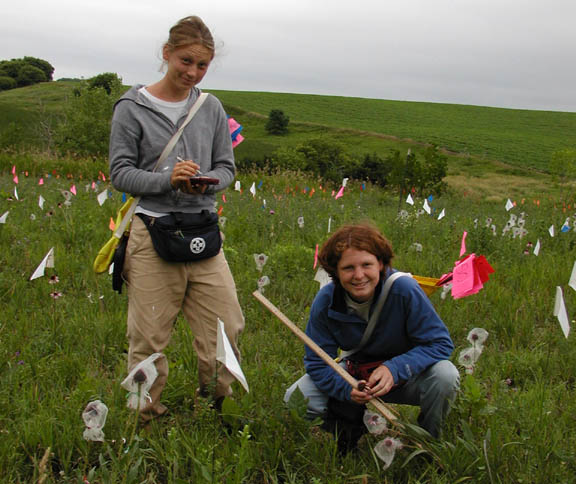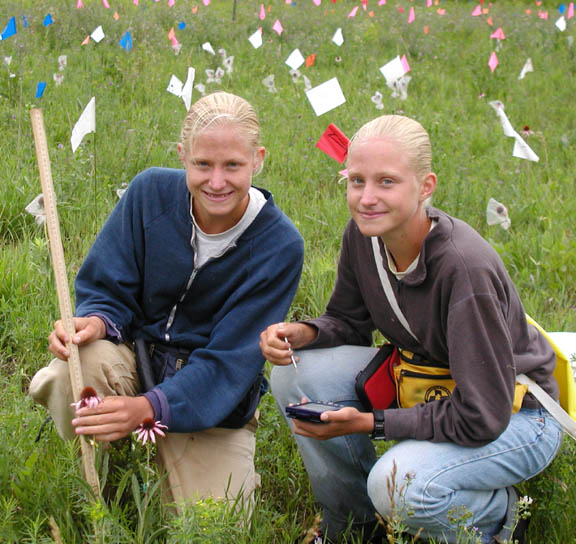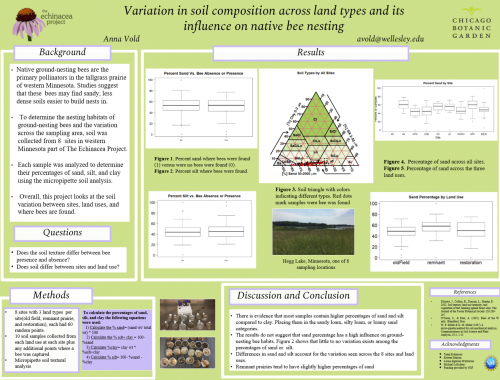|
|
Echinacea Project 2018
Environmental Science, Wellesley College 2022
Research Interests
Growing up on a dairy farm, I am passionate about creating a sustainable planet and, of course, my cows! I would like to learn more about Minnesota prairie and plants like Echinacea angustifolia to better understand how to create more sustainable agricultural practices and make agriculture beneficial to all consumers and the environment.
So, this summer I am open to studying anything from pollinators to phenology to help me understand more about conserving the resources and land we have now.
Statement
I am from Glenwood, MN about half an hour south-east of the project base. As I mentioned above, my family owns and operates Dorrich Dairy. Even though I do not plan on majoring in agriculture at this point, I hope to maybe work with it in some aspect in the future. In my free time, I enjoy gardening, baking, traveling, eating pie, and playing tennis.

Echinacea Project 2017
I will be a senior at Minnewaska Area High School this next fall. Our district is fairly small and located between Glenwood and Starbuck.
Research Interest
I am interested in learning more about plants and prairies in general. I would also like to learn more about the types of plants I live around and ways to protect the prairies we have in Minnesota. So far, I am undecided on exactly what I would like to study in college, but I am heavily considering plant science or biology.
Statement
I live in Glenwood, Minnesota where my family owns and operates Dorrich Dairy. Growing up working on a farm I have a passion for the dairy industry and agriculture in general. I enjoy gardening in the summer and spending time with friends and family. Some of my other hobbies include baking, eating pie, tennis, traveling, and 4-H.

The tallgrass prairie once occupied vast expanses of land across America’s heartland. Today, it is among the most threatened and least protected habitats in the world. Each year, parts of the tallgrass prairie continue to be lost to agriculture and development making the conservation and protection of this system of utmost importance.
Native bees are the most abundant and most important pollinators in the tallgrass prairie. The bees that we study for this project are called solitary bees. They are different from honeybees in that they are native to North America. They are also different from bumblebees (where many genera are native to North America) in that they do not form a colony and build their nests individually.
We know a lot about the kinds of things bees like to eat (pollen and nectar) and their foraging behavior. However, most solitary bees spend the majority of their life in their nests, yet we know so little about what conditions are suitable for them to build their nests. In the tallgrass prairie, over 80% of bees are solitary, ground-nesting bees. We have a lot to learn about the kinds of habitat suitable for them to build their nests in.
We know some things about what ground-nesting bees may like. Evidence suggests they might like sandy soil, bare ground, and well-drained, south-facing slopes. However, we don’t know what bees in the tallgrass prairie may like for their nesting habitat conditions as most of these studies have been done across other ecosystems.
Much of the prairie has been changed from its original condition. We call the history of this condition “land-use history.” I am interested in how the history of the land may determine where bees build their nests in the ground. Some common types of land use history are remnant prairies which are pristine habitats with untilled soil, prairie restorations which are plantings of prairie plants with disturbed soil, and old fields which are fields leftover from agriculture that may have been tilled or grazed.
Using emergence traps, we moved traps everyday for a total of 1,440 across the season. We caught 110 ground-nesting bees in traps across 24 sites this summer. I placed traps at 8 different locations, each with three different land types at each location (remnant prairie, prairie restoration, and old fields). We found that the most bees nest in the prairie (40), while restorations and old fields have the same numbers of nesters (35). While land use is not good at determining bee nests, we did find that the location and land use when combined are both important in determining where bees nests.
I also placed pan traps at all 24 sites and caught 564 bees. Pan traps were colored blue, white, and yellow to attract a diversity of foraging bees at every site. We will use these bees to compare the foraging and nesting communities at each site.
I also measured many microhabitat characteristics of the soil and vegetation at some of the traps. We found that bare ground is a good predictor of where bees build their nests. We also found that the soil texture, especially the amount of silt and sand help determine where bees nest. A diverse plant community with lots of native plants is also a good predictor for bee nests.
We still have a lot more work to do to determine where bees are building their nests. Our next steps are to identify all the bee specimens caught in ground nests and in pan traps. Once specimens are identified, we can learn more about the species specific results for ground nesting bees.
 Two of the tents used to capture bees out in the field Start year: 2018
Location: Hegg Lake Wildlife Management Area restoration, Riley, Aanenson, East Elk Lake Road, and other non-project sites
Overlaps with: Pollinators on Roadsides
Physical specimens: 674 bees were brought back to CGB and are currently being pinned and photographed by Mike Humphrey. Soil samples were collected from every location where bees were caught + a random sample from other traps.
GPS points shot: We shot points for all trap locations. Ask/email Kristen for this data.
Products: This work is part of Kristen’s Master’s thesis
Previous team members who have worked on this project include: Anna Vold (2018)
Thanks so much to help from Team Echinacea 2018, especially Anna Vold who helped measure soil texture. Also many thanks to Emily Staufer from Lake Forest College who processed bees from HFW, and Mike Humphrey who has pinned some bees from this project.
Today was an eventful Sunday for many members of Team Echinacea. This morning, members of the Roost and I drove to Glenwood to see our very own Waterama princess, Anna Vold, in the annual Waterama parade. Waterama is an annual summer festival full of fun activities to celebrate water and lake culture. This is fitting because Glenwood is a quaint little town next to a very big lake. The parade was very chill, along with everyone watching the parade. Things were very not chill as soon as we saw Anna Vold drive up on her float. I think all of Glenwood could hear us cheering for Anna.
 Anna the Aquamania princess waving to her fans. After the parade we headed back to Alex. I demanded that we all stop to take photos at a sunflower field right along the highway. We quickly did a round of phenology on the plants. I am glad that my friends were eager to let me take pictures of them because I think we all got a new profile picture out of the experience!
 Right after doing some funology on the Sunflowers.  Evan’s arm was perfect for taking this selfie. Later at the Roost Mia cooked French Toast for dinner. We also played a few rounds of KanJam and Werewolf. And after dinner, a few of us went bowling. It is no surprise that Zeke (who is good at every sport except basketball) won the first round. One beer in however, Andy was able to steal a win for the second round using the 8lb ball. The only negative part of this activity was that unfortunately they did not take music requests at the bowling alley. We had fun despite this hiccup.
What a great day! See you tomorrow at work.
What phenology means to you (in 5 words or less):
“16/10 first day, great job!”
-Wesley Braker
“Around Landfill, Monarch caterpillars”
-[possibly Anna Vold]
“one two zero one seven”
-Alexander Hajek
“Never red, white, and clear.”
-William Reed
“I’ll do the Nessman loop”
-Lea Richardson
“That’s a nice Echinacea”
-Tracie Hayes
“Let’s check the decision tree!”
-A. Barto
“This one’s not twist-tied!”
-Gretel Kiefer
“Active searching, turn your head”
-[likely Stuart]
Every summer the Echinacea Project provides employment and internships for undergraduate students, recent graduates, graduate students, and others starting or expanding their science or conservation careers. Our summer researchers receive training, gain skills, and get much and diverse experience. In turn, summer field researchers contribute immensely to the project. We accomplish a lot every summer.
- 2024
- Abby Widell, lead research assistant, Chicago Botanic Garden
- Brittany Clay, Plano ISD, TX
- Elise Tulloss, La Salle High School, WA
- Emma Alexander-Eitzman, field tech, Chicago Botanic Garden
- Hailey Werk, Augustana University, SD
- Ian Roberts, Northwestern University, IL
- Indigo Nelson-Frey, College of Wooster, OH
- Jared Beck, postdoc, Chicago Botanic Garden
- Liam Poitra, University of Minnesota – Morris, MN
- Maddie Sadler, Northwestern University, IL
- Max Likins, College of Wooster, IL
- Ning Zhang, Alexandria Area High School, MN
- Wyatt Mosiman, Northwestern University, IL
- Zach Zarling, Western Washington University, WA
- 2023
- Harrison Aakre, Alexandria High School, MN
- Jan Anderson, Portland State University, OR
- Jared Beck, postdoc, Chicago Botanic Garden
- Alexa Blume, West Central Area High School, MN
- Alex Carroll, University of Minnesota-Morris, MN
- Jak Davis, College of Wooster, OH
- Daytona Hoberg, Morris Area High School, MN
- El Johnson, North Dakota State University, ND
- Margaret Medini, St. Catherine University, MN
- Wyatt Mosiman, Northwestern University, IL
- Lindsey Paulson, Gustavus Adolphus College, MN
- Liam Poitra, University of Minnesota-Morris, MN
- Blaire Reuter, West Central Area High School, MN
- Victoria Romero, Peach Tree Ridge High School, GA
- Luke Settles, Illinois College, IL
- Abby Widell, University of Wisconsin-Madison, WI
- 2022
- Jared Beck, postdoc, Chicago Botanic Garden
- Alex Carroll, University of Minnesota-Morris, MN
- Manogya Chandar, Northeastern University, MA
- Sophia Chen, Lake Forest College, IL
- Nate Hauser, Minnewaska Area High School, MN
- Daytona Hoberg, Morris Area High School, MN
- Britney House, Morris Area High School, MN
- Joey McGarry, Northwestern University, IL
- Lindsey Paulson, Gustavus Adolphus College, MN
- Kennedy Porter, West Central Area High School, MN
- Emma Reineke, University of Minnesota-Twin Cities, MN
- Johanna Steensma, Skidmore College, NY
- Mia Stevens, College of Wooster, OH
- Amy Waananen, graduate student, University of Minnesota-Twin Cities, MN
- Geena Zebrasky, Gustavus Adolphus College, MN
- 2021
- Laura Beld, Morris Area High School, MN
- Kennedy Porter, West Central Area High School, MN
- Emma Reineke, Alexandria Area High School, MN
- Wesley Michaels, Northwestern University, IL
- Maris Woldin, College of Wooster, OH
- Allie Radin, Binghamton University, IL
- Miyauna Incarnato, College of Wooster, OH
- Drake Mullett, graduate student, Northwestern University, IL
- Lea Richardson, graduate student, Northwestern University, IL
- Amy Waananen, graduate student, University of Minnesota-Twin Cities, MN
- Alex Wicker, Jackson Middle School, FL
- John Van Kempen, West Central Area High School, MN
- Jennifer Ison, College of Wooster, OH
- Mia Stevens, College of Wooster, OH
- Jared Beck, Chicago Botanic Garden
- Alex Carroll, University of Minnesota-Morris, MN
- 2020
- Amy Waananen, graduate student, University of Minnesota, MN
- Allie Radin, Binghamton University, NY
- Anna Meehan, Alexandria Area High School, MN
- Anna Allen, Alexandria Area High School, MN
- Devon Davis, Cornell University, NY
- Drake Mullett, graduate student, Northwestern U, IL
- Emma Greenlee, Carleton College, MN
- Erin Eichenberger, graduate student, North Carolina State University, NC
- John Van Kempen, high school teacher, West Central Area High School
- Lea Richardson, graduate student, Northwestern U, IL
- Mia Stevens, College of Wooster, OH
- Riley Thoen, graduate student, University of Georgia, GA
- 2019
- Julie Bailard, Carleton College, MN
- Erin Eichenberger, College of William and Mary, VA
- Jay Fordham, Gustavus Adolphus College, MN
- Miyauna Incarnato, College of Wooster, OH
- Jennifer Ison, Assistant professor of biology, College of Wooster, OH
- Shea Issendorf, Alexandria Area High School, MN
- Ren Johnson, College of Wooster, OH
- Michael LaScaleia, graduate student, University of Connecticut, CT
- Drake Mullett, graduate student, Northwestern University, IL
- Avery Pearson, College of Wooster, OH
- Riley Thoen, Gustavus Adolphus College, MN
- John Van Kempen, high school teacher, West Central Area High School
- Amy Waananen, graduate student, University of Minnesota, MN
- 2018
- Andy Hoyt, Carleton College, MN
- Jennifer Ison, Assistant professor of biology, College of Wooster, OH
- Evan Jackson, College of Wooster, OH
- Morgan Kirwin, Morris Area School, MN
- Kristen Manion, graduate student Northwestern University, IL
- Bridgid Mark, College of Saint Benedict and Saint John’s University, MN
- Michael LaScaleia, Tufts University, MA
- Will Reed, graduate student, University of Colorado Boulder, CO
- Mia Stevens, College of Wooster, OH
- Riley Thoen, Gustavus Adolphus College, MN
- John Van Kempen, high school teacher, West Central Area High School
- Anna Vold, Minnewaska Area High School, MN
- Amy Waananen, graduate student, University of Minnesota, MN
- Zeke Zelman, College of Wooster, OH
- 2017
- Wesley Braker, St. Olaf College, MN
- Alexander Hajek, College of Wooster, OH
- Tracie Hayes, U North Carolina at Chapel Hill
- Kristen Manion, graduate student, Northwestern U
- Will Reed, University of Minnesota-Twin Cities
- Lea Richardson, graduate student, Northwestern U
- Anna Vold, Minnewaska Area High School, MN
- 2016
- James Eckhardt, Gustavus Adolphus, MN
- Alexander Hajek, College of Wooster, OH
- Danny Hanson, Carleton College, MN
- Jennifer Ison, Assistant Professor, College of Wooster, OH
- Alyson Jacobs, College of Wooster, OH
- Laura Leventhal, College of Wooster, OH
- Scott Nordstrom, College of William and Mary, VA
- Leah Prescott, College of Wooster, OH
- Lea Richardson, Chicago Botanic Garden & Northwestern Univ, IL
- Will Reed, University of Minnesota-Twin Cities
- Abby Van Kempen, West Central Area High School, MN
- Amy Waananen, St. Olaf College, MN
- 2015
- Lea Chesney, Teacher, North Hollywood High School, CA
- Alison Hall, Carleton College, MN
- Danny Hanson, Carleton College, MN
- Taylor Harris, Fisk University, TN
- Gina Hatch, Carleton College, MN
- Ben Lee, St. Mary’s College of Maryland
- Matt Olhoft, Teacher, West Central Area High School, MN
- Will Reed, University of Minnesota-Twin Cities
- Katherine Schneider, University of Wisconsin-Madison
- Abby Van Kempen, West Central Area High School, MN
- Amy Waananen, St. Olaf College, MN
- 2014
- Jared Beck, Carleton College, MN
- Claire Ellwanger, Bowdoin College, ME
- Allison Grecco, DePaul University, IL
- Keaton Holsinger, Wabash College, IN
- Elizabeth Mays, Colorado College, CO
- Maureen Page, Scripps College, CA
- Will Reed, Jefferson High School, MN
- Cam Shorb, Carleton College, MN
- 2013
- Sarah Baker, Saint Catherine University, MN
- Dayvis Blasini, Northeastern Illinois University
- Lydia English, Carleton College, MN
- Mike Howe, Gustavus Adolphus College, MN
- Pamela Kittelson, Gustavus Adolphus College, MN
- Kory Kolis, Gustavus Adolphus College, MN
- Reina Nielsen, Gustavus Adolphus College, MN
- Ilse Renner, University of Wisconsin Eau Claire
- Marie Schaedel, Carleton College, MN
- Sara Zufan, Chicago Public Schools, IL
- Amy Dykstra, Bethel University, MN * part-time
- Jennifer Ison, Wabash College, IN * part-time
- 2012
- Jillian Gall, College of the Atlantic, ME
- Lydia Kan, Bethel College, St. Paul, MN
- Kelly Kapsar, Carleton College, MN
- Andrew Kaul, St. Olaf College, MN
- Shona Sanford-Long, Middlebury College, VT
- Katherine Muller, Northwestern University, IL
- Maria Wang, Northwestern University, IL
- Karen Taira, Northwestern University, IL
- Greg Dierson, Great Plains High School, Watertown, SD
- Amy Dykstra, University of Minnesota, Twin Cities
- 2011
- Nicholas Goldsmith, Purdue University, IN
- Lee Rodman, Grinnell College, IA
- Amber Zahler, Lake Forest College, IL
- Katherine Muller, Northwestern University, IL
- Josh Drizin, Northwestern University, IL
- Amber Eule-Nashoba, University of Minnesota, Twin Cities
- Callin Switzer, John F. Kennedy Middle School, Gallup, NM
- Maria Wang, Northwestern University, IL
- Greg Dierson, Great Plains High School, Watertown, SD
- Amy Dykstra, University of Minnesota, Twin Cities
- 2010
- Lauren Hobbs, University of Virginia
- Ian Holmen, Carleton College, MN
- Greg Diersen, Great Plains Lutheran High School, SD
- Laura Townsend, Florida International University
- Katie Koch, Lakeland College, WI
- Hillary Lyons, Carleton College, MN
- Josh Drizin, Northwestern University, IL
- Kate Gallagher, Northwestern University, IL
- Amy Dykstra, University of Minnesota
- 2009
- Allegra Halverson, McGill University, Canada
- Daniel Rath, Carleton College, MN
- Greg Diersen, Great Plains Lutheran High School, SD
- Mimi Jenkins, University of Pittsburgh, PA
- Andrea Jilling, McGill University, Canada
- Amanda Gallinat, Carleton College, MN
- Kate Gallagher, Northwestern University, IL
- Megan Jensen, Northwestern University, IL
- Amy Dykstra, University of Minnesota
- 2008
- Julie Stutzbach, Beloit College, WI
- Lecia Babeu, University of Vermont
- Ben Iberle, Grinnell College, IA
- Denise Feng, Bard College, NY
- Lani Rosenthal, Whitman College, CA
- Megan Jensen, Northwestern University, IL
- Christine Dumoulin, Northwestern University, IL
- Amy Dykstra, University of Minnesota
- 2007
- Amy Alstad, Carleton College, MN
- Ian Grettenberger, Western Washington University
- Julie Nicol, Carleton College, MN
- Josh Drizin, Denison University, OH
- Jameson Pfeil, Denison University, OH
- Colin Venner, Denison University, OH
- Rachel Mills, University of Minnesota
- 2006
- Laura Jensen, University of Minnesota, Duluth
- Aki Tanimoto, Barnard College, NY
- Rachel Gross, University of Pennsylvania
- Rachel Mills, University of Minnesota
- Andrea Southgate, Northwestern University, IL
- 2005
- Kelly Hereid, Carleton College, MN
- Kellie Carim, Carleton College, MN
- Will Stutz, Carleton College, MN
- 2004
- Andra Forney, Trent University, ON
- Steph Pimm, Carleton College, MN
- Jens Stevens, Carleton College, MN
- Katie Stuble, St Mary’s College, MD
- 2003
- Jennifer Ison, St. Olaf College, MN
- Rachel Clark, Beloit College, WI
- Nancy VanDyke, Bowdoin College, ME
- Peter Harrison, Humboldt State, CA
- 2002
- Monica Poelchau, Grinnell College, IA
- Andrea Grunst, Carleton College, MN
- Melissa Grunst, Carleton College, MN
- Sarina Jepsen, University of Oregon
- 2001
- Jen Jacobs, University of California, Santa Cruz
- Phil Kopf, Truman State University, MO
- 1995 – 2000
- Jeannette Martinez 2000, University of California, Davis
- Steve Kehler 1999, Oberlin College, OH
- Sara Tackett 1998, University of Michigan
- Matthew Miller 1997, University of California, San Diego
- Nathan Reiner 1996, West Central Area High School
- Glen Koons 1995
-
Photos…
 The 2024 crew (missing Indigo Nelson-Frey and Max Likins)  The 2023 crew (missing Wyatt Mosiman)  The 2022 crew (missing Nate Hauser and Manogya Chandar)  The 2021 crew (missing Emma Reineke)  The 2020 crew (missing Drake Mullet)  The 2019 summer crew on Day 1 of the field season!  A photo from 2015.
 A photo from 2014. Click to enlarge 
A photo from 2013. Click to enlarge
  
Some photos from 2012. Click to enlarge
 
Some photos from 2011. Click to enlarge
 
Some photos from 2010. Click to enlarge
 
Some photos from 2009. Click to enlarge
 
Some photos from 2008. Click to enlarge
 
Some photos from 2005. Click to enlarge
 
Some photos from 2004. Click to enlarge
 
Some photos from 2002. Click to enlarge
Hello once again flog!
Last weekend I presented a poster (link below) at the Massachusetts Association of Conservation Commissions convention in Worcester, MA.
This was my first poster symposium and I am glad to say it went great! I was able to interact with so many people attending the conference, along with other student researchers. I received some wonderful comments and feedback, and hopefully was able to make more people aware of soil, native bees, and the Echinacea Project!
My poster focused on the soil texture data I collected over January and its correlation to native bee nesting. After a little more work in R, I found some surprising results. The percent of sand or silt did not have any influence on bee presence. However, between the eight sites and the three land uses, variation in percent sand was significant. Meaning, soil variation does exist across the Echinacea Project sampling area, it just might not be the strongest factor influencing bee nesting.
The soil is only one component of this project though. We also collected data on the slope, vegetation, percent bare ground, and soil hardness. One of these variables may be the key in understanding native bee nesting, so there’s a lot more analyzing and R to come.
I am so grateful for all the help I have received to make my first poster experience a success!
Until next time!
 Click on the link below to see a high resolution image of the poster annavoldMACCposter19Final
After processing soil samples for two weeks (341 to be exact!) I was able to analyze some of the results and, along with the trusty functions of R (and of course T-Swift music) graph my data. I have included my poster down below and a pdf link.
The results provide evidence that shows soil in western Minnesota contains large percentages of sand and silt, with little clay. Between each of the 8 locations, some variation was present in the amount of sand, but not with clay. The results also showed that sand and silt may have no influence on the nesting locations of native bees. When compared, the graphs of sand and silt percentages from where a bee was found and not found were quite similar. So the question remains- What are the factors that influence where bees build their nests?
Throughout my entire time working on Team Echinacea and this soil project, I have gained valuable knowledge and experience about data collection, project development, and different research methods. And not to mention the amazing lab group and individuals I have gotten to work/collaborate with! Since my college career is just beginning, the future has a lot in store for me- I can’t wait to see what happens in the next couple of years.
But one thing is for sure, I can officially cross “eat deep dish pizza in Chicago” off my bucket list!

AnnaVoldposter19.pdf
Wes | Anna | Lea | Tracie | Will | Ashley | Gretel | Kristen | Alex
 Team Echinacea 2017: Wes, Anna, Lea, Will, Tracie, Ashley, Gretel, Kristen, Alex (Left to Right) Click on a name to meet a team member!
Wes | Anna | Lea | Tracie | Will | Ashley | Gretel | Kristen | Alex
|
|
